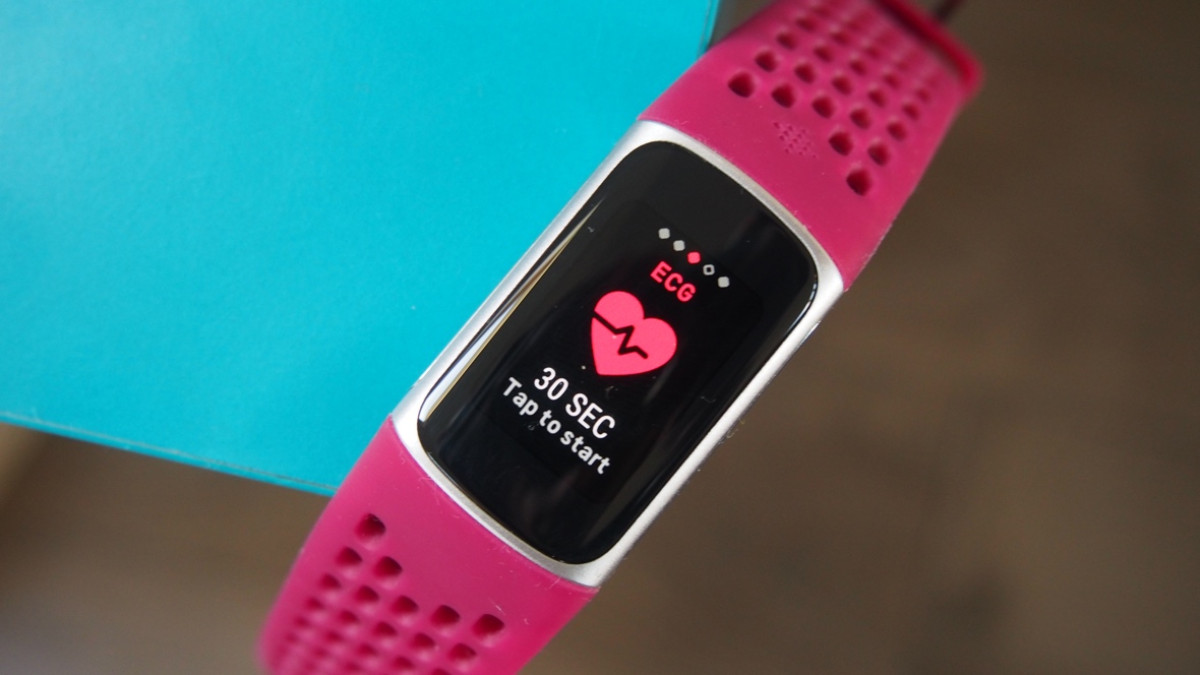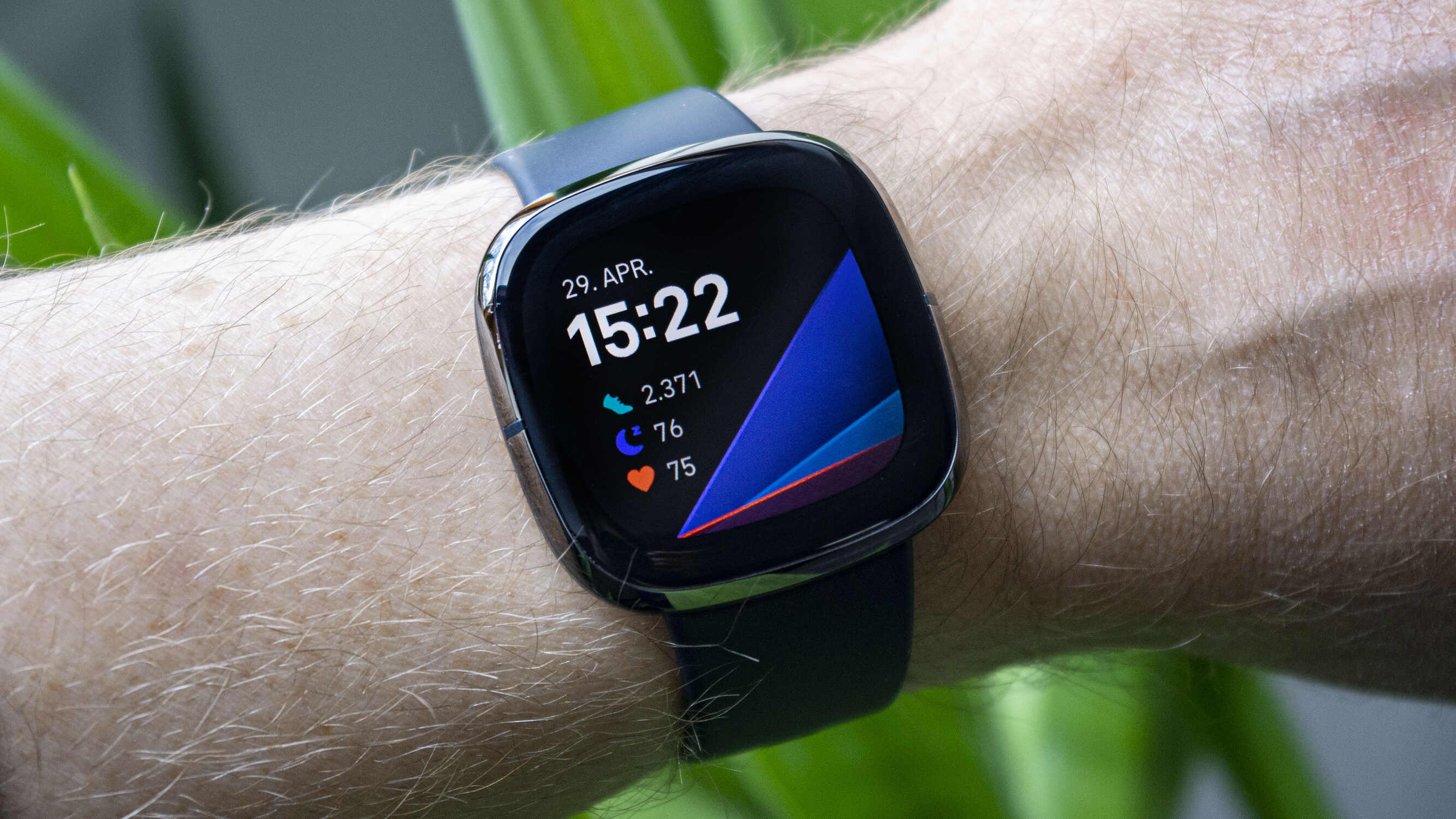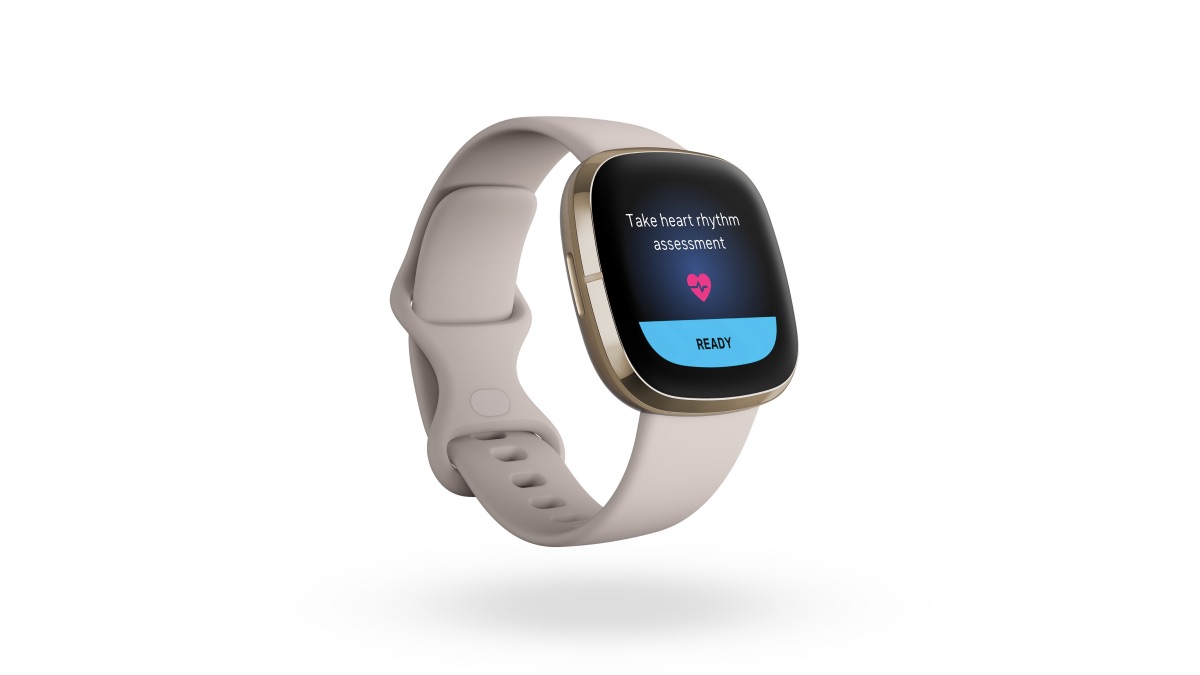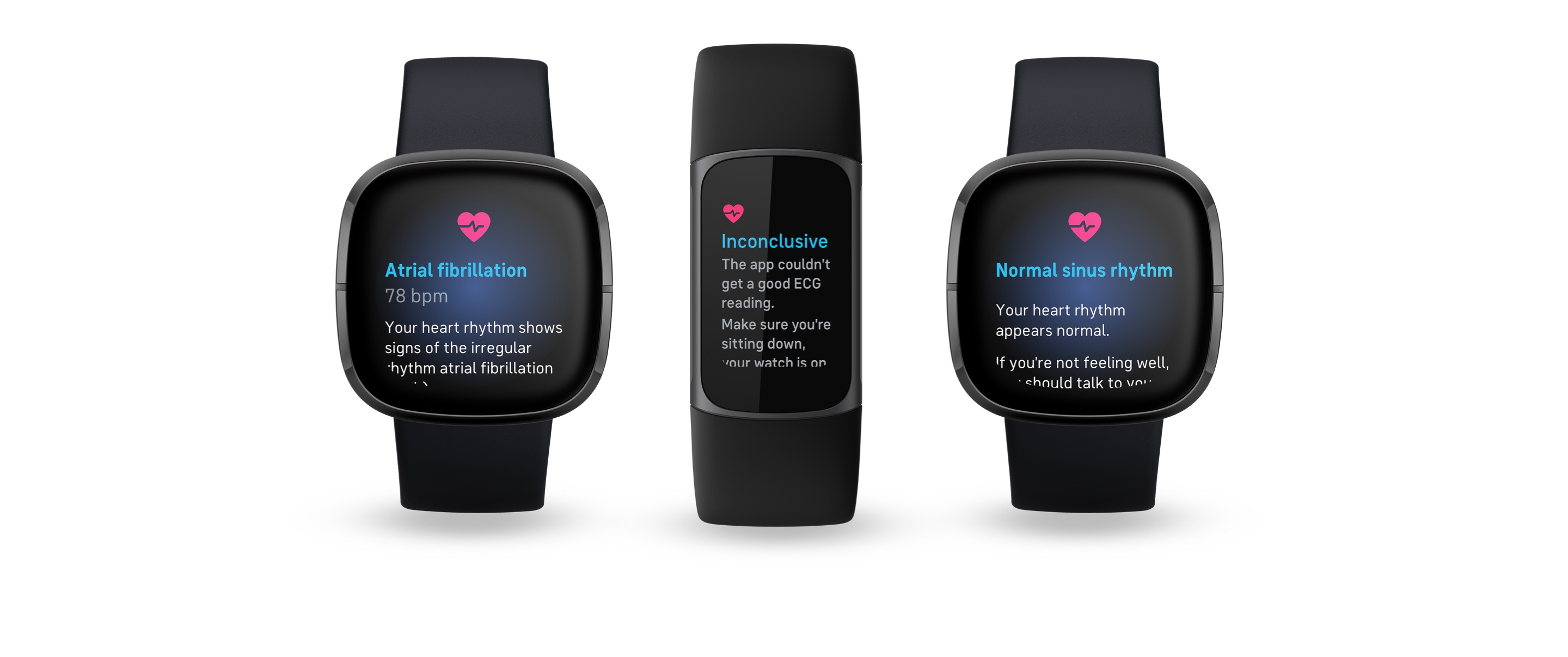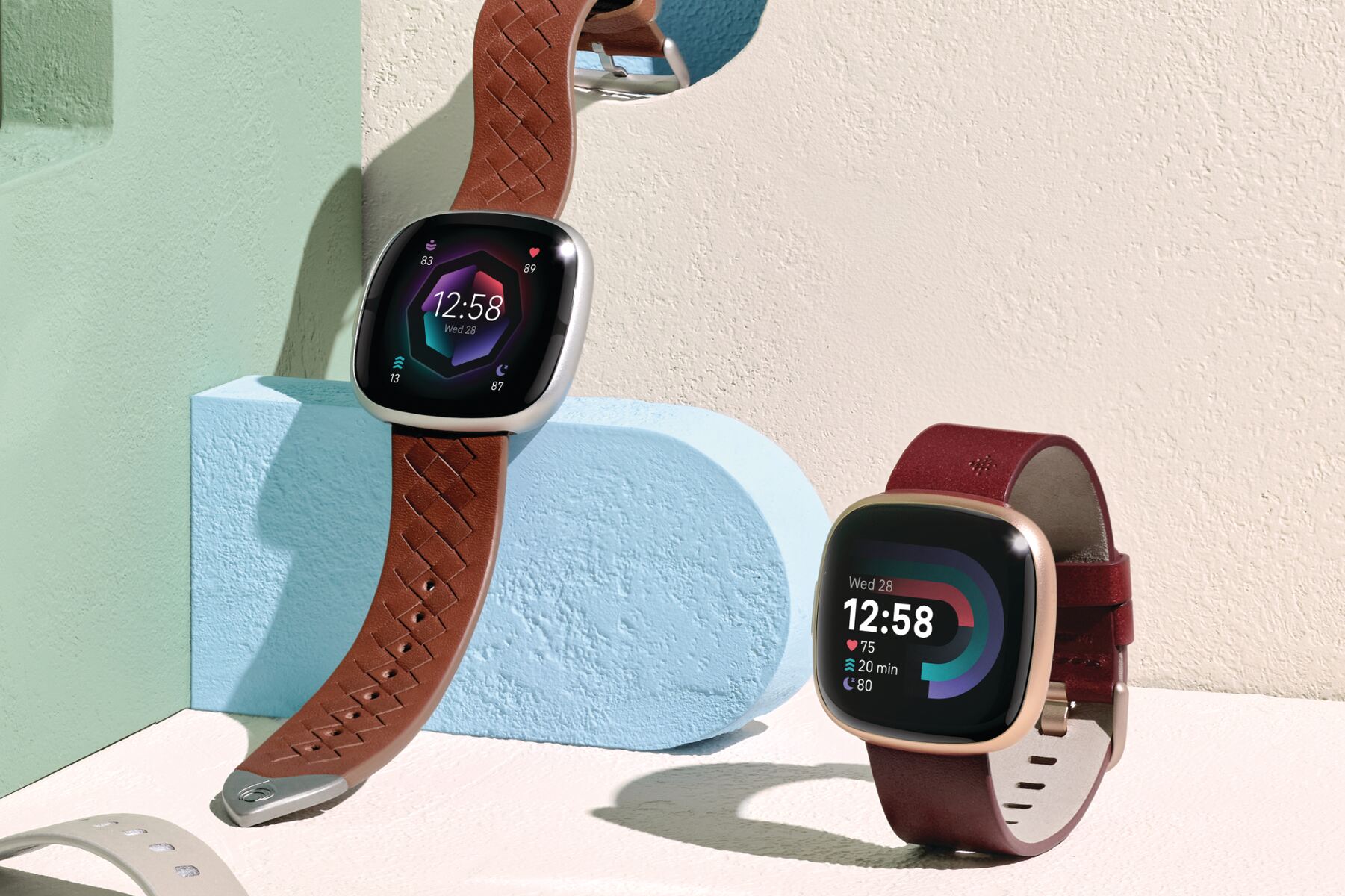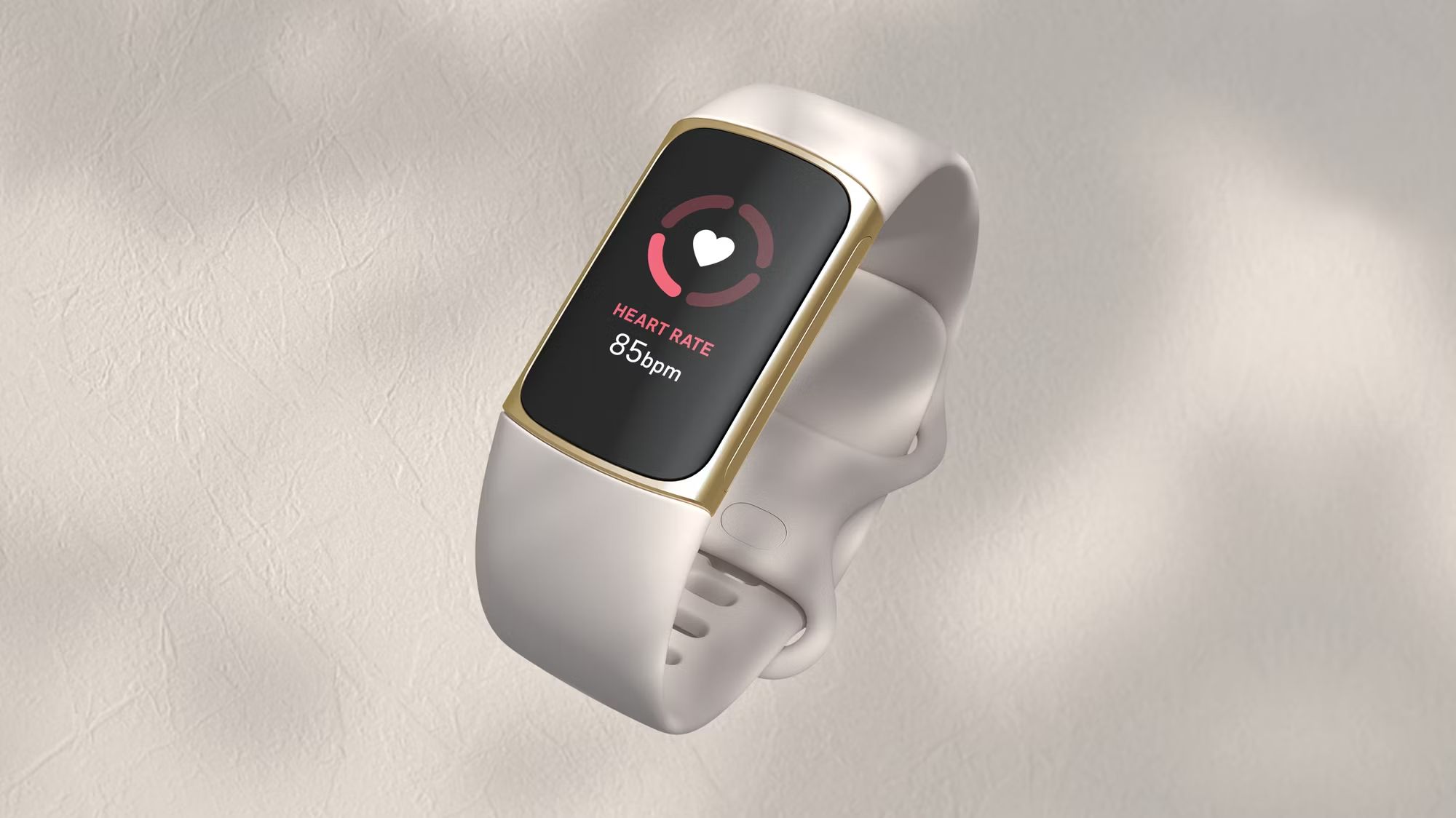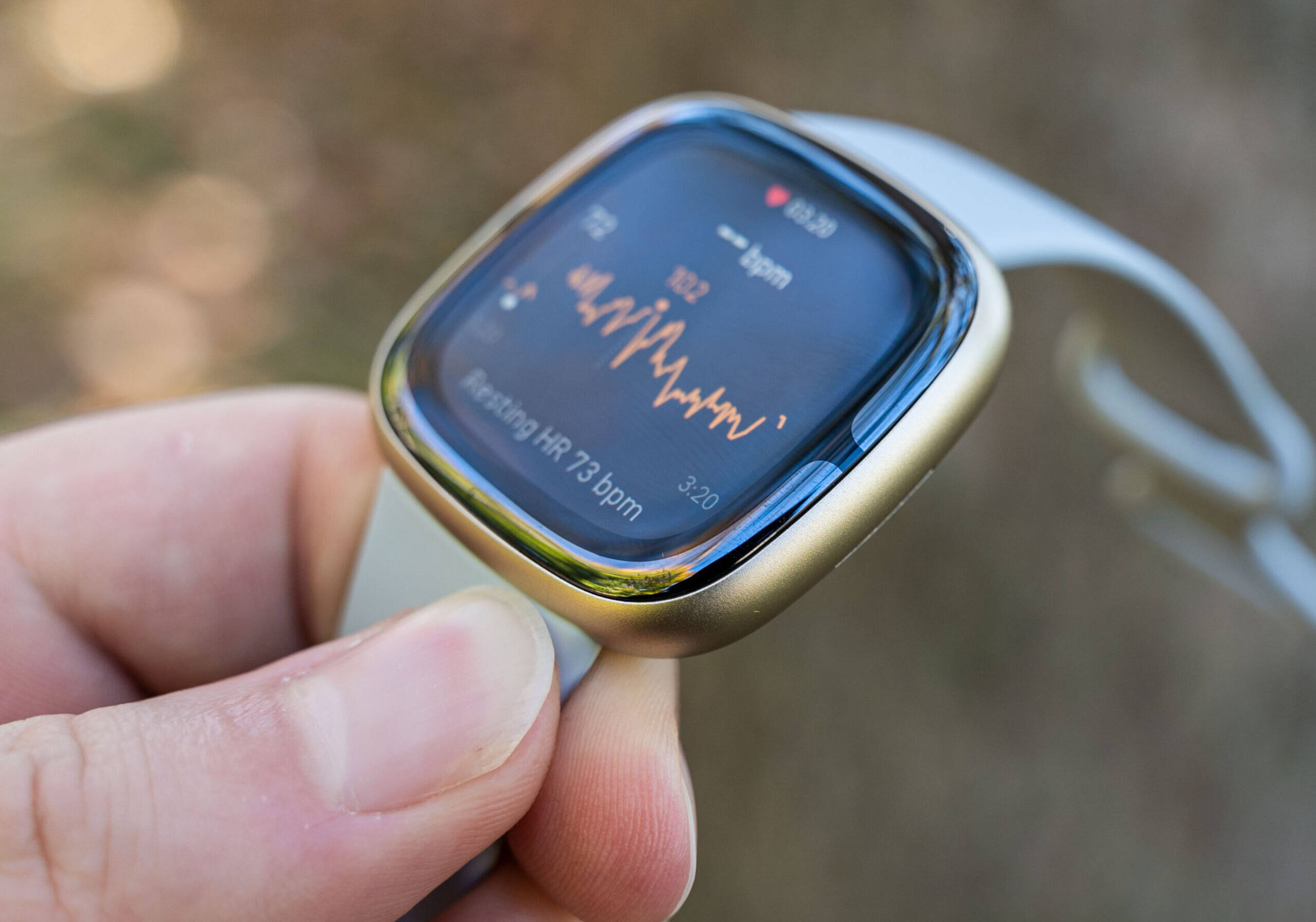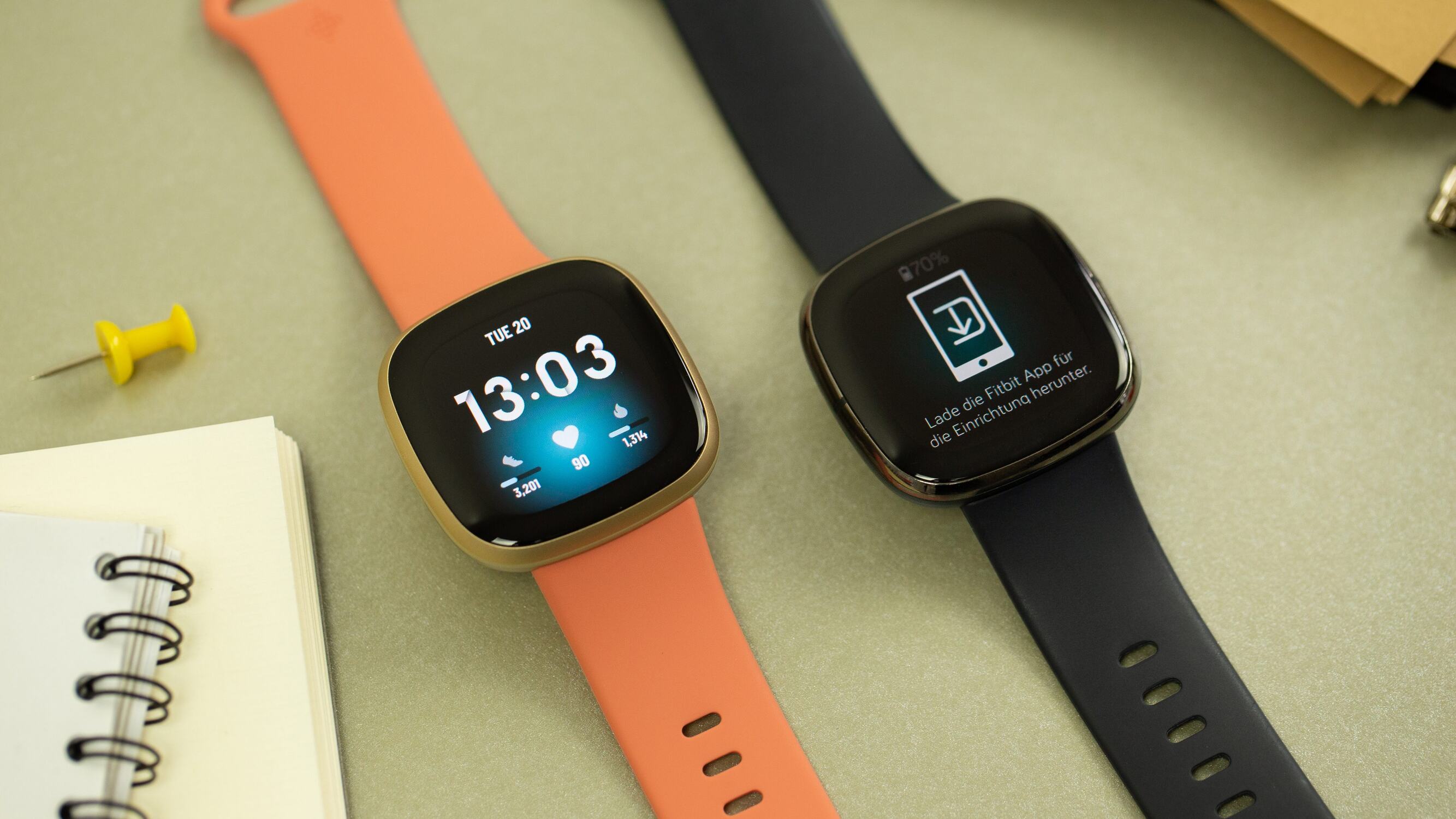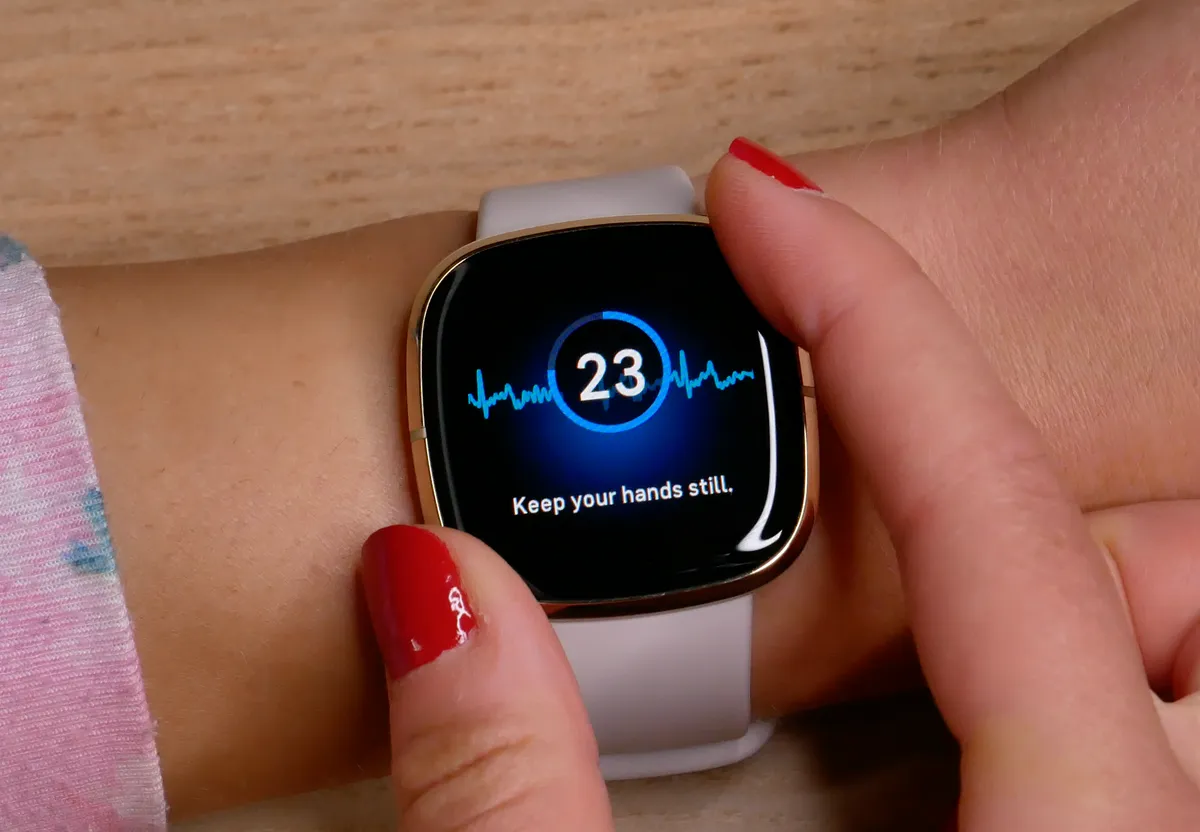Introduction
The Fitbit Charge 5 is a remarkable wearable device that offers a plethora of features to help users monitor and improve their health. Among its many functionalities, the ECG (electrocardiogram) feature stands out as a valuable tool for tracking heart health. This feature allows users to record an ECG directly from their wrist, providing valuable insights into their heart's electrical activity.
In this comprehensive tutorial, we will delve into the intricacies of performing an ECG using the Fitbit Charge 5. Whether you are a fitness enthusiast, someone with a preexisting heart condition, or simply curious about your heart's well-being, understanding how to utilize the ECG feature can be empowering and enlightening.
Throughout this guide, we will explore the step-by-step process of preparing for and performing an ECG on the Fitbit Charge 5. Additionally, we will discuss how to interpret the ECG results and provide valuable tips for ensuring a successful ECG recording.
By the end of this tutorial, you will have a thorough understanding of how to leverage the ECG feature on your Fitbit Charge 5, empowering you to take proactive steps towards monitoring and maintaining your heart health. So, let's embark on this enlightening journey to unlock the full potential of your Fitbit Charge 5 and gain valuable insights into your heart's electrical activity.
Understanding the Fitbit Charge 5 ECG Feature
The Fitbit Charge 5 ECG feature represents a significant advancement in wearable technology, offering users the ability to perform an electrocardiogram directly from their wrist. This innovative functionality enables individuals to gain insights into their heart's electrical activity, providing valuable data for monitoring cardiac health.
The ECG feature on the Fitbit Charge 5 works by measuring the electrical signals generated by the heart as it beats. By capturing this data, the device can detect irregularities in the heart's rhythm, such as atrial fibrillation (AFib). This capability is particularly crucial as AFib can often go undetected, yet it significantly increases the risk of stroke and other heart-related complications.
To initiate an ECG recording, users simply need to place their finger on the stainless steel ring surrounding the device's sensor. This action completes the electrical circuit, allowing the Fitbit Charge 5 to capture the electrical impulses produced by the heart. Once the recording is complete, the device analyzes the data to provide users with valuable insights into their heart's rhythm.
The ECG feature on the Fitbit Charge 5 is designed to be user-friendly, allowing individuals to seamlessly integrate heart health monitoring into their daily routine. With the ability to perform ECGs at any time and in any location, users can proactively monitor their heart's electrical activity, leading to early detection of potential issues and facilitating timely intervention.
Moreover, the Fitbit app serves as a central hub for storing and analyzing ECG recordings, allowing users to track changes in their heart's electrical activity over time. This comprehensive approach to heart health monitoring empowers individuals to take a proactive stance in managing their well-being, potentially leading to early detection of cardiac issues and improved overall health outcomes.
In summary, the Fitbit Charge 5 ECG feature represents a significant leap forward in wearable health technology, providing users with a convenient and effective means of monitoring their heart's electrical activity. By leveraging this innovative functionality, individuals can gain valuable insights into their cardiac health, ultimately leading to informed decision-making and proactive management of their well-being.
Preparing for the ECG
Before initiating an ECG recording on the Fitbit Charge 5, it is essential to ensure that the conditions are optimal for obtaining an accurate and reliable reading. Proper preparation can significantly enhance the quality of the ECG data captured, leading to more meaningful insights into your heart's electrical activity.
Ensuring Proper Fit and Contact
First and foremost, it is crucial to confirm that the Fitbit Charge 5 is securely fastened to your wrist and positioned correctly. A snug yet comfortable fit is essential to maintain consistent contact between the device's sensors and your skin. This ensures that the electrical signals from your heart are accurately captured during the ECG recording process.
Skin Cleanliness
Next, it is advisable to ensure that the skin underneath the Fitbit Charge 5 is clean and free from any substances that may interfere with the sensors' ability to make proper contact. By keeping the skin free from dirt, oils, and lotions, you can optimize the sensor's performance and improve the accuracy of the ECG recording.
Relaxation and Stability
Creating a calm and stable environment is also vital when preparing for an ECG recording. Minimizing movement and external disturbances can help ensure that the captured ECG data is not affected by external factors. Finding a comfortable and relaxed position, such as sitting or standing still, can contribute to a more accurate representation of your heart's electrical activity.
Device Readiness
Lastly, it is essential to confirm that the Fitbit Charge 5 is adequately charged and functioning optimally before initiating the ECG recording. Ensuring that the device has ample battery life and is free from any technical issues will help prevent interruptions during the recording process, allowing for a seamless and uninterrupted ECG capture.
By paying attention to these preparatory steps, you can set the stage for a successful ECG recording on your Fitbit Charge 5. These simple yet crucial measures can significantly enhance the accuracy and reliability of the captured ECG data, ultimately providing you with valuable insights into your heart's electrical activity.
Performing the ECG on Fitbit Charge 5
Performing an electrocardiogram (ECG) on the Fitbit Charge 5 is a straightforward yet pivotal process that empowers users to gain valuable insights into their heart's electrical activity. By following a few simple steps, individuals can initiate an ECG recording directly from their wrist, enabling them to monitor their cardiac health with ease and convenience.
To begin the ECG recording process, users need to access the ECG feature on their Fitbit Charge 5. This can be achieved by navigating to the ECG app on the device and selecting the option to start a new recording. Once the ECG feature is activated, users are prompted to place their finger on the stainless steel ring surrounding the device's sensor. This action completes the electrical circuit, allowing the Fitbit Charge 5 to capture the electrical impulses produced by the heart.
As the ECG recording commences, it is essential to remain still and relaxed to minimize movement and external interference. Maintaining a stable position during the recording process contributes to the accuracy and reliability of the captured ECG data. The device will indicate when the recording is complete, at which point users can review the results directly on the Fitbit Charge 5 or access more detailed insights through the Fitbit app.
Upon completing the ECG recording, users can access the captured data through the Fitbit app, where they can review the results and gain valuable insights into their heart's electrical activity. The app provides a comprehensive overview of the ECG recording, highlighting any irregularities or noteworthy patterns in the heart's rhythm. This detailed analysis empowers users to monitor changes in their cardiac health over time and seek professional medical guidance if necessary.
By performing an ECG on the Fitbit Charge 5, individuals can take proactive steps towards understanding and managing their heart health. The convenience of being able to record an ECG at any time and in any location enhances the accessibility of cardiac monitoring, ultimately leading to early detection of potential issues and informed decision-making regarding one's well-being.
In summary, performing an ECG on the Fitbit Charge 5 is a user-friendly and impactful process that equips individuals with valuable insights into their heart's electrical activity. By seamlessly integrating ECG recordings into their daily routine, users can proactively monitor their cardiac health, leading to early detection of irregularities and improved overall well-being.
Interpreting the ECG Results
Interpreting the electrocardiogram (ECG) results obtained from the Fitbit Charge 5 is a pivotal aspect of leveraging this innovative feature to gain valuable insights into one's heart health. The ECG results provide a comprehensive overview of the heart's electrical activity, allowing users to identify irregularities, monitor changes over time, and potentially detect underlying cardiac issues.
Upon completing an ECG recording, users can access the results through the Fitbit app, where they are presented with a detailed analysis of the heart's electrical signals. The ECG results are depicted as a graphical representation of the heart's rhythm, showcasing the electrical impulses generated during each heartbeat. This visual representation enables users to identify various components of the ECG waveform and understand their significance in assessing cardiac health.
Key components of the ECG waveform include the P wave, QRS complex, and T wave, each of which provides valuable information about the heart's electrical activity. The P wave represents the electrical impulse that triggers the contraction of the atria, while the QRS complex signifies the electrical activity associated with ventricular contraction. The T wave reflects the repolarization of the ventricles, preparing them for the next heartbeat.
Understanding the morphology and timing of these components is essential in interpreting the ECG results. Any deviations from the typical waveform characteristics, such as irregularities in the intervals between waves or abnormal shapes of the waveform components, can indicate potential cardiac issues that warrant further evaluation.
Moreover, the Fitbit app provides users with interpretive insights into the ECG results, highlighting any detected irregularities or signs of atrial fibrillation (AFib). AFib is a common cardiac arrhythmia that can significantly increase the risk of stroke and other heart-related complications. Detecting AFib through ECG recordings empowers users to seek timely medical intervention and proactive management of their cardiac health.
By interpreting the ECG results obtained from the Fitbit Charge 5, users can gain a deeper understanding of their heart's electrical activity and identify any potential concerns that may require medical attention. The ability to monitor changes in the ECG waveform over time facilitates proactive management of cardiac health, potentially leading to early detection of irregularities and improved overall well-being.
In summary, interpreting the ECG results from the Fitbit Charge 5 is a valuable process that empowers users to gain meaningful insights into their heart health. By understanding the components of the ECG waveform and leveraging the interpretive insights provided by the Fitbit app, individuals can proactively monitor their cardiac activity, leading to informed decision-making and improved overall well-being.
Tips for a Successful ECG Recording
Ensuring a successful electrocardiogram (ECG) recording on the Fitbit Charge 5 involves attention to detail and adherence to best practices. By following these tips, users can optimize the accuracy and reliability of their ECG data, leading to more meaningful insights into their heart's electrical activity.
-
Maintain Proper Fit and Contact: Securing the Fitbit Charge 5 snugly on the wrist and ensuring consistent contact between the device's sensors and the skin is essential for obtaining accurate ECG readings. A proper fit minimizes signal interference and enhances the device's ability to capture the heart's electrical impulses effectively.
-
Optimize Skin Cleanliness: Keeping the skin underneath the Fitbit Charge 5 clean and free from oils, lotions, or dirt is crucial for maximizing sensor performance. Clean skin promotes optimal contact with the sensors, improving the quality of the ECG recording and minimizing potential signal distortion.
-
Minimize Movement and Disturbances: Maintaining a calm and stable environment during the ECG recording process is vital for reducing external interference. Minimizing movement and external disturbances helps ensure the accuracy and reliability of the captured ECG data, leading to more precise insights into the heart's electrical activity.
-
Verify Device Readiness: Before initiating an ECG recording, it is important to confirm that the Fitbit Charge 5 is adequately charged and functioning optimally. Ensuring that the device is in optimal condition helps prevent interruptions during the recording process, allowing for a seamless and uninterrupted ECG capture.
-
Follow ECG Initiation Instructions: When initiating an ECG recording, carefully follow the device's instructions for finger placement and the recording process. Adhering to the recommended steps ensures that the ECG is captured accurately and consistently, leading to reliable data for analysis.
-
Review ECG Results Promptly: After completing an ECG recording, promptly review the results through the Fitbit app to gain immediate insights into the heart's electrical activity. Regularly monitoring and reviewing ECG recordings facilitates proactive management of cardiac health and early detection of potential irregularities.
By incorporating these tips into the ECG recording process, users can optimize the quality and reliability of their ECG data, enabling them to gain valuable insights into their heart's electrical activity. This proactive approach to ECG recording empowers individuals to take charge of their cardiac health, leading to informed decision-making and improved overall well-being.
Conclusion
In conclusion, the Fitbit Charge 5 ECG feature represents a significant advancement in wearable health technology, offering users a convenient and effective means of monitoring their heart's electrical activity. By providing the capability to perform electrocardiograms directly from the wrist, the Fitbit Charge 5 empowers individuals to gain valuable insights into their cardiac health, ultimately leading to informed decision-making and proactive management of well-being.
The step-by-step guide presented in this tutorial has shed light on the process of preparing for and performing an ECG on the Fitbit Charge 5, as well as interpreting the ECG results. By understanding the intricacies of leveraging the ECG feature, users can proactively monitor their heart's electrical activity, potentially leading to early detection of irregularities and improved overall health outcomes.
Furthermore, the tips for a successful ECG recording provided in this guide serve as valuable best practices for optimizing the accuracy and reliability of ECG data. By adhering to these recommendations, users can enhance the quality of their ECG recordings, leading to more meaningful insights into their heart's electrical activity and facilitating proactive management of cardiac health.
The convenience and accessibility of the Fitbit Charge 5 ECG feature enable individuals to seamlessly integrate heart health monitoring into their daily routine. Whether it is tracking changes in the ECG waveform over time or identifying potential irregularities, the ECG feature equips users with the tools to take charge of their cardiac health and seek timely medical intervention if necessary.
Ultimately, the ability to perform ECGs at any time and in any location empowers individuals to stay informed about their heart's electrical activity, potentially leading to early detection of cardiac issues and improved overall well-being. By embracing the ECG feature on the Fitbit Charge 5, users can embark on a journey of proactive heart health monitoring, paving the way for a healthier and more informed lifestyle.







